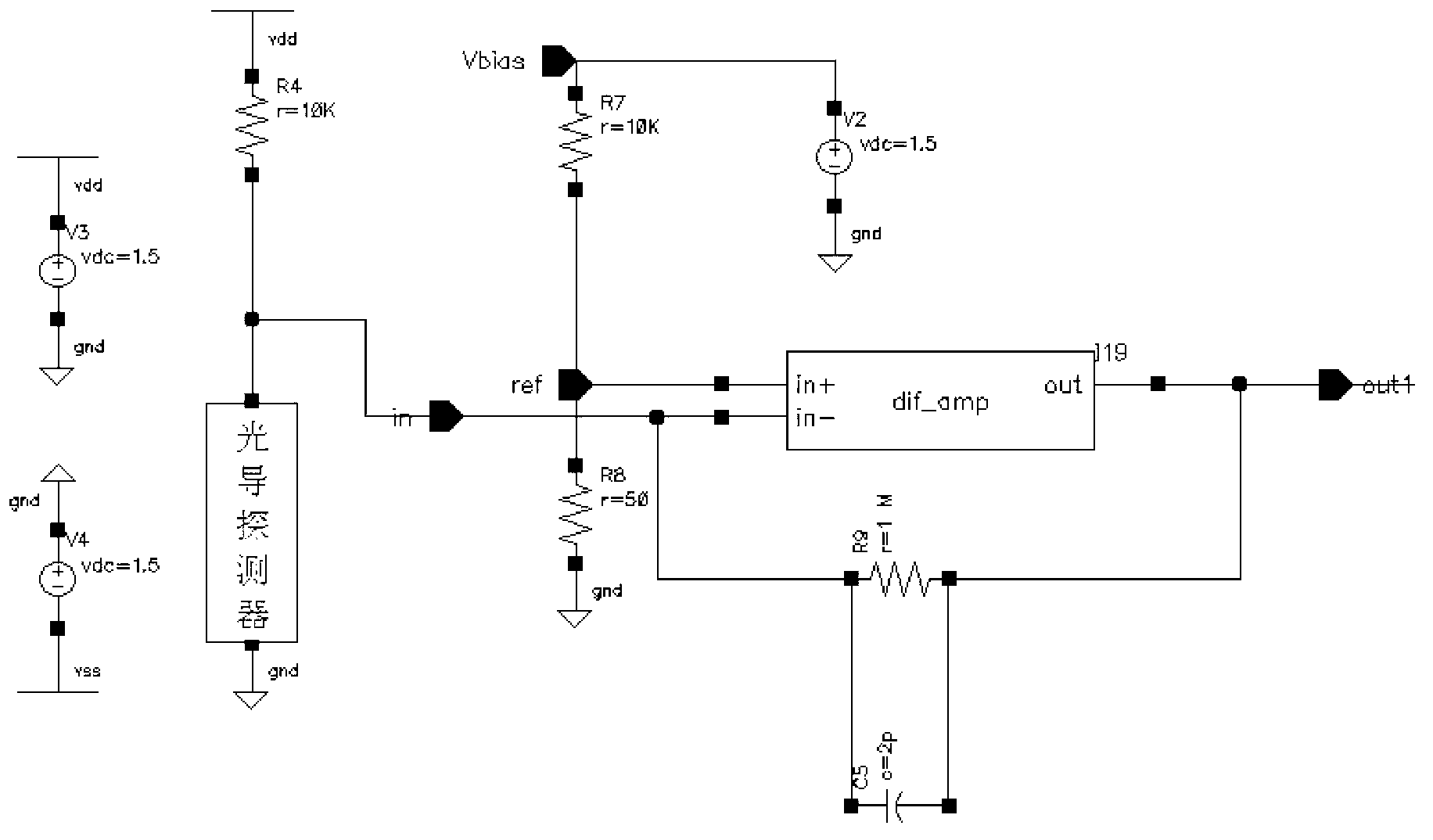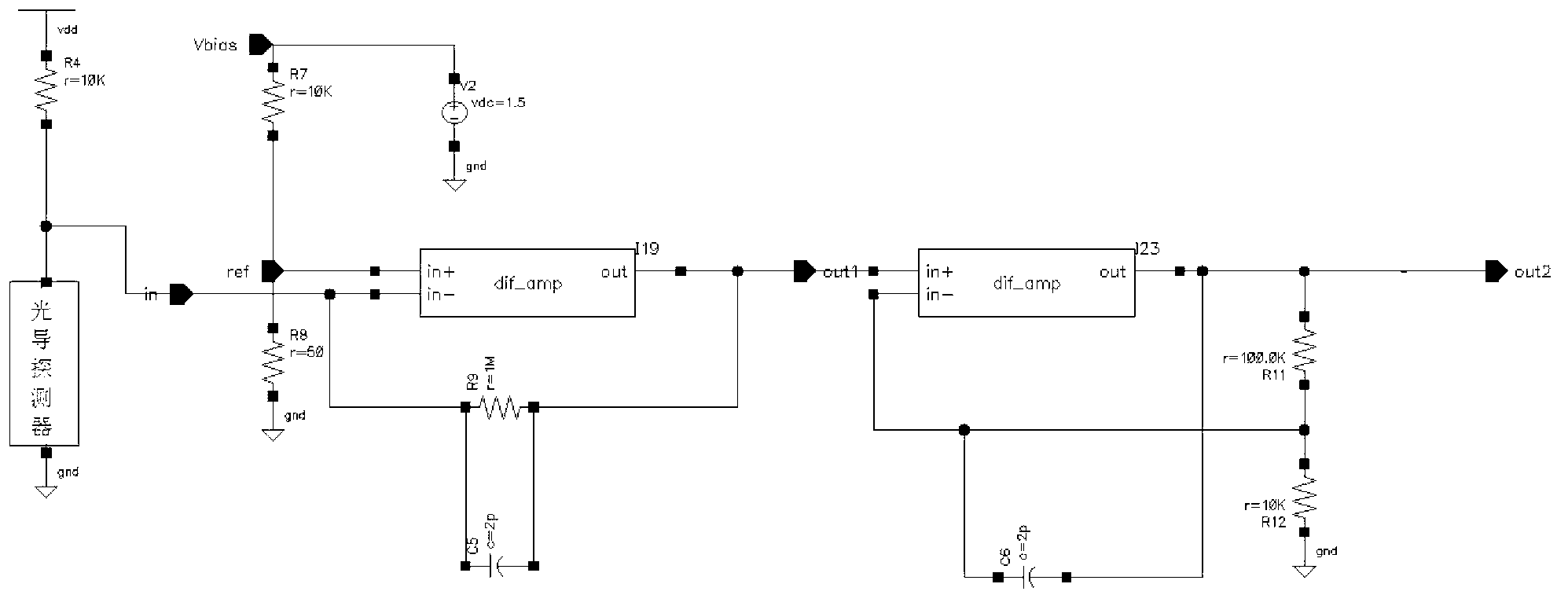Complementary metal oxide semiconductor (CMOS) amplifying circuit matched with infrared low-impedance photoconductive detector
A technology of amplifying circuit and low impedance, which is applied in the field of CMOS circuit design to reduce system noise and ensure bandwidth
- Summary
- Abstract
- Description
- Claims
- Application Information
AI Technical Summary
Problems solved by technology
Method used
Image
Examples
Embodiment 1
[0015] figure 1 For the bridge mode of the amplifier and the first stage of amplification. R4 is connected with the infrared photoconductive detector. The circuit design is 10K ohms. If you want to increase or decrease the current flowing through the photoconductive detector, you can increase or decrease the resistance of R4. R7 corresponds to R4, and its resistance should be designed to be equal, and this circuit is also designed to be 10K ohms. R8 corresponds to the photoconductive detector, and its size is designed to be equivalent to the resistance of the detector. This circuit is designed to be about 50 ohms. If the resistance of the detector is inconsistent with the size of R8, you can adjust the Vbias to make the output voltage of the circuit be about zero volts when it is static. The amplifier is suitable for amplifying signals of photoconductive detectors with low input impedance of 20 ohms to 200 ohms. When the infrared photoconductive detector receives the infrar...
Embodiment 2
[0019] figure 2 It is a positive terminal amplification method, and its output is in the same phase as the input signal. The ratio of R11 and R12 determines the amplification factor of the second stage. In this circuit, R11 is designed to be 100K ohms, and R12 is designed to be 10K ohms. The magnification is 10x. To increase the magnification of the second stage, the different resistance ratios of R11 and R12 can be changed. The feedback capacitor between the IN negative terminal and OUT is designed to be 2PF. This capacitor acts as a stabilizer for the second circuit. Different magnifications should be compensated with different feedback capacitors.
Embodiment 3
[0021] image 3 It is a general diagram of the connection between the first stage and the second stage. The two-stage amplifiers are directly connected, and the bridge input method and the first-stage amplifier are also directly connected, which overcomes the shortcomings of capacitive coupling. Due to the capacitance The small leakage current will cause the slow drift of the DC static point caused by capacitive coupling. The way of DC connection enables the circuit to amplify both AC and DC signals.
PUM
 Login to View More
Login to View More Abstract
Description
Claims
Application Information
 Login to View More
Login to View More - R&D
- Intellectual Property
- Life Sciences
- Materials
- Tech Scout
- Unparalleled Data Quality
- Higher Quality Content
- 60% Fewer Hallucinations
Browse by: Latest US Patents, China's latest patents, Technical Efficacy Thesaurus, Application Domain, Technology Topic, Popular Technical Reports.
© 2025 PatSnap. All rights reserved.Legal|Privacy policy|Modern Slavery Act Transparency Statement|Sitemap|About US| Contact US: help@patsnap.com



